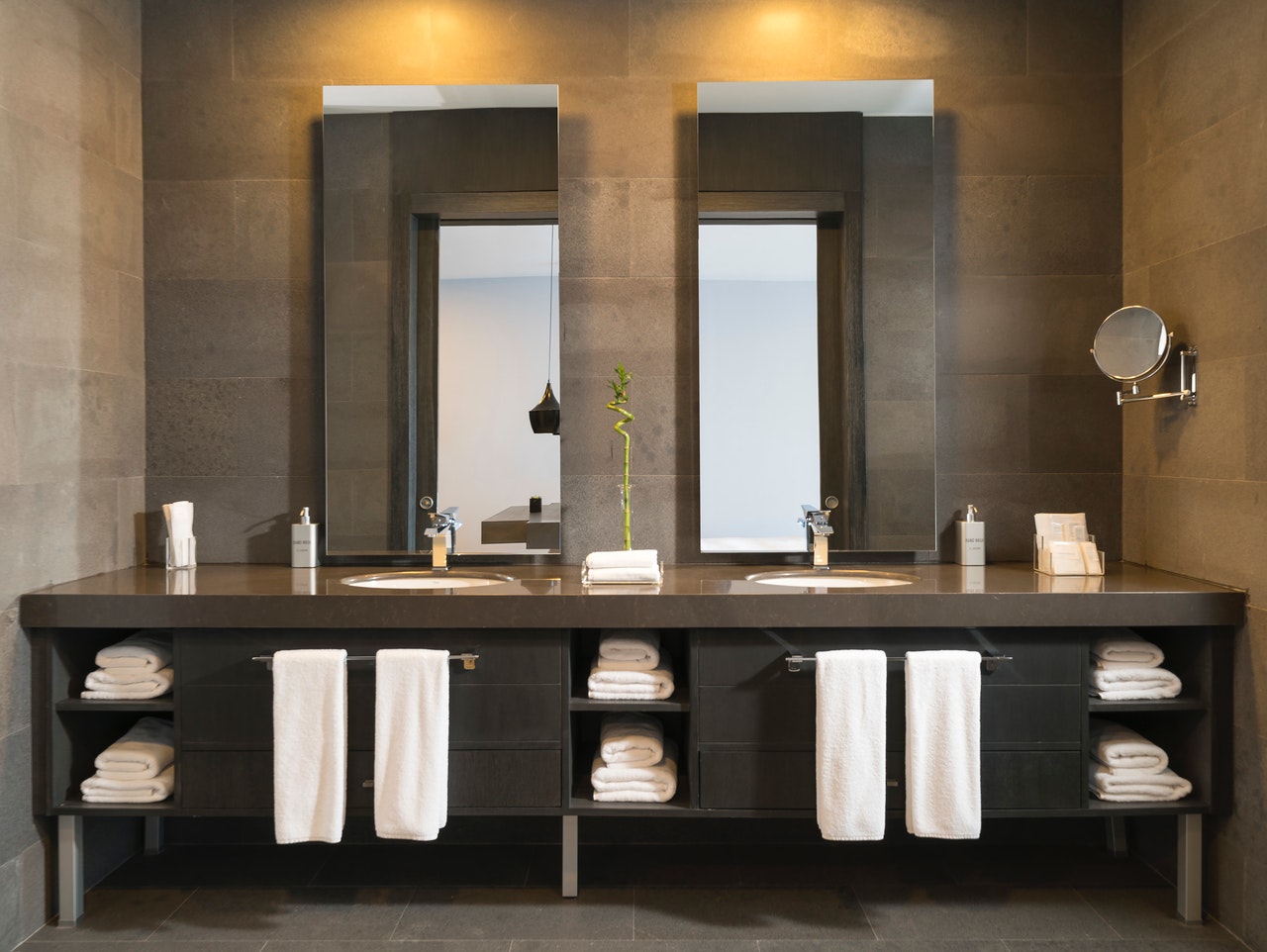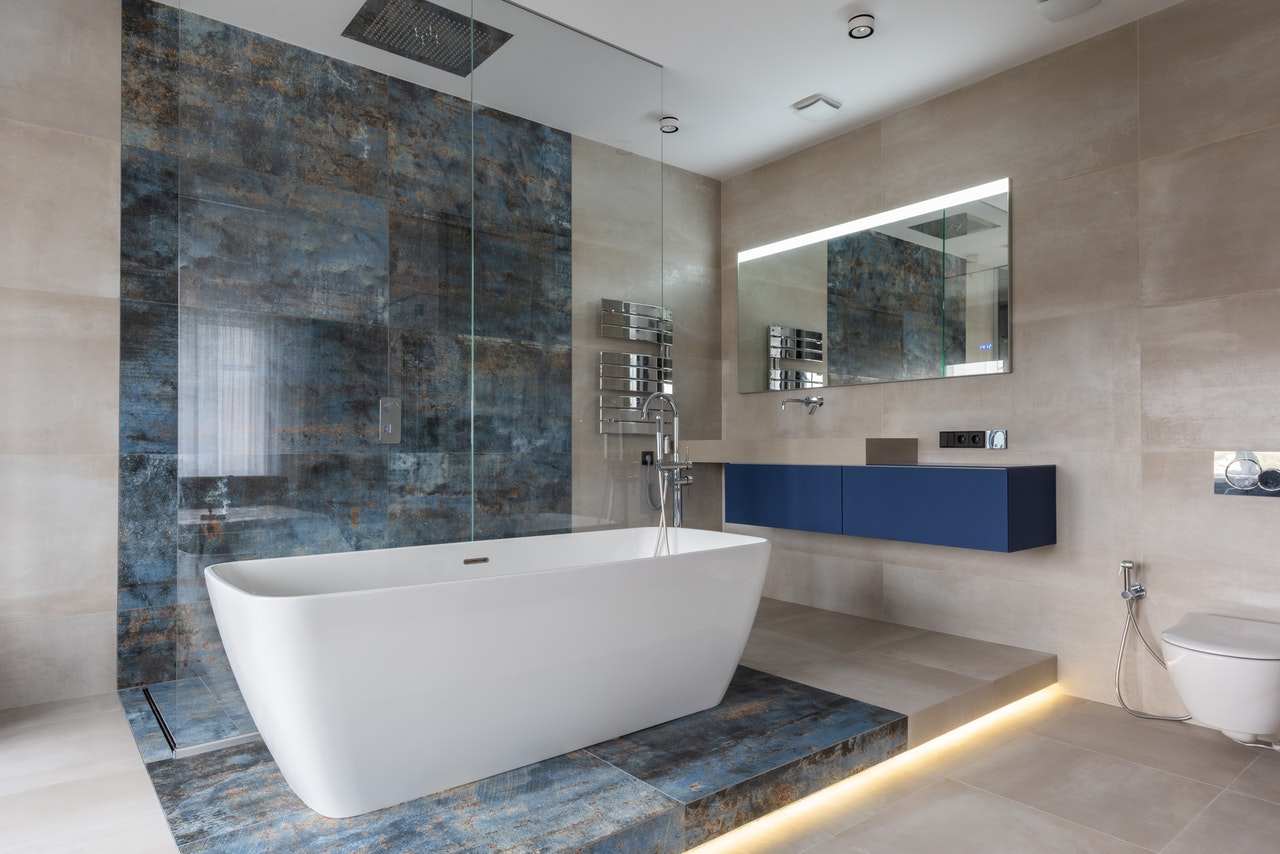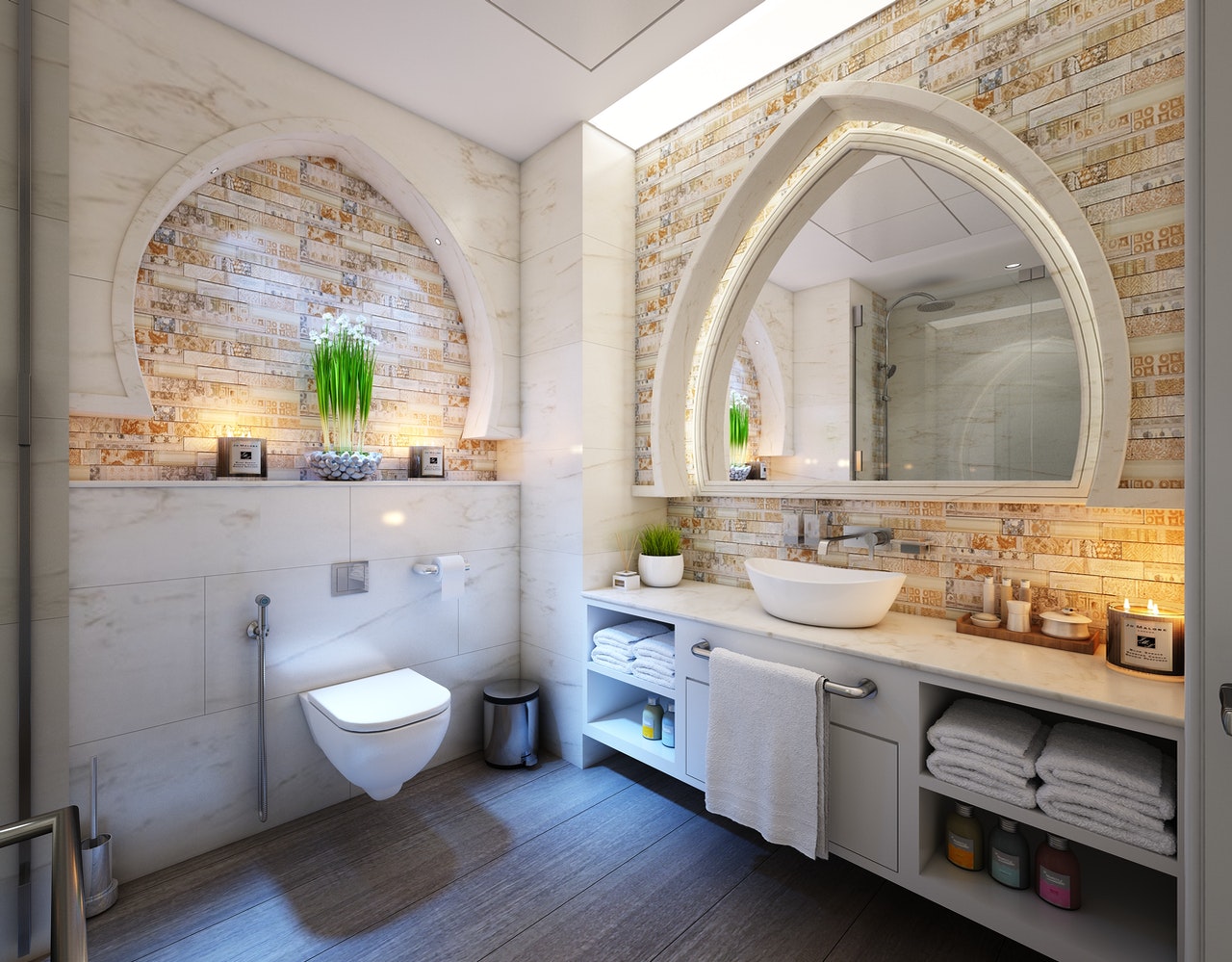No products in the cart.
Bathroom Mirrors & Design, Care & Maintenance
How To Guide: The Basics & Specifics of Bathroom Cleaning
The thing about bathrooms is that you can’t achieve those sparkling results unless you tackle both the basics and specifics of bathroom cleaning. While the former is recommended to keep your bathroom clean on a daily or regular basis, the latter is intended to target specific areas that are often overlooked when cleaning the space.
It is also important to remember the primary purpose of bathroom cleaning which is to eliminate germs; removing dirt and stains is secondary. Nevertheless, a clean and sanitary bathroom is something all homeowners yearn for, and today, Luxe Mirrors Australia is here to help you achieve that!
Read on for our comprehensive yet easy-to-follow guide on how to clean your bathroom from top to bottom.
The Basics of Bathroom Cleaning
Although the basic tasks to clean your bathroom are pretty straightforward, knowing where and how to start will help you get the job done more efficiently as compared to ‘winging it’. With the guide below, you will be able to clean your bathroom fast, and in a systematic manner.
Step 1: Clear the Space
Nothing slows you down quite like a bunch of random things getting in your way when you are cleaning. This is no different in a bathroom space; everything from towels and bath products to baskets/bins and bathroom accessories or décor pieces should all be cleared out so that you are left with a rather empty space to clean. Bathroom surfaces and components are a lot easier to scrub down when these items are out of the way.
Step 2: Remove Dust
No one ever tells you that your bathroom needs dusting because it’s the only room in the house where you can actually wash away dust and dirt. While that’s true, sparing a few minutes to wipe away the dust will minimise the amount of time you spend scrubbing or removing loose debris that gets moved around with water. So, before you wet the interior of your bathroom, take a clean dust cloth (dampen it if needed), and wipe surfaces and fixtures to remove dust.
Step 3: Apply Cleaning Products
Here’s a great tip to make bathroom cleaning easier and more effective: let cleaning products stand! Many homeowners make the mistake of applying cleaners to a surface and scrubbing the area immediately after; while this may do the trick to clean up dirt, you end up using a lot more elbow grease than required. On the other hand, when cleaning products are given enough standing time, they work to break down grime and stains, making your job of scrubbing a lot easier and quicker. More importantly, when using disinfectants to clean and sanitise your bathroom, the products require some amount of standing time (as mentioned on the label) in order to kill bacteria. Without it, the disinfectant is useless.
To ensure that you are cleaning your bathroom efficiently, apply the respective cleaning products to your shower area/bathtub, toilet bowl (interior and exterior), sink, and countertop; leave them to fight dirt and bacteria while you move on to the next step.

Step 4: Wipe Down Other Surfaces, Fittings, and Fixtures
For this, a multi-purpose cleaner and microfibre cloth are advised. Simply spray or dampen the cloth with the cleaner, and wipe the windowsill, shelves, towel holder/rack, toilet paper holder, and other bathroom fittings. Use this time to clean some of your plumbing fixtures as well including the faucets, showerheads, toilet seat, and lid, etc. For hygienic reasons, use separate cloths to wipe down the toilet components, shower components, and towel racks.
Step 5: Clean Components Where Cleaners Have Been Applied
Even 10 minutes of standing time is enough to make cleaning bathroom components quicker and more effective. It is, however, advisable to clean the toilet bowl last as the cleaning product typically requires more standing time to break down stubborn grime or stains.
Start with the counter space and bathroom sink. Be sure to use different sponges/scrubbers when cleaning each component, as well as to dampen the cleaning tool before using it. After you’ve scrubbed and rinsed the counter and sink, take a floor cleaning brush, dampen the shower area, and scrub the tiles. If you are cleaning a bathtub, a clean handheld brush or non-abrasive scrubber should be your tool of choice. Finish off this step by cleaning the toilet bowl interior with a toilet brush, and the exterior with a brush or scrubber. Rinse each component/surface thoroughly to remove traces of the cleaning products used.
Step 6: Clean the Floor
The floor is the last thing you should clean in your bathroom since this is where dirt washed off from higher surfaces tend to collect. Moreover, as you move around while the floor is damp, it is likely to get dirtier. In homes where the bathrooms are cleaned regularly, perhaps, mopping the floor with a cleaner will suffice in maintaining stain-free tiles. On the other hand, if the floor requires a quick scrubbing, consider using a long-handled floor brush for the job.
To clean your bathroom floor quickly, make a floor cleaning solution in a squeezy bottle, dampen the floor with plain water, apply the cleaner to different sections of the floor with a squirt or two, and then scrub or mop. Rinse off the cleaning solution thereafter, and squeegee the water into the drain.
The Specifics of Bathroom Cleaning

Now, for the rest of the bathroom (you’re probably wondering: ‘what’s left?’); some of these specific areas are not only prone to dirt but harbour germs as well. Therefore, it’s important to deep clean your bathroom every now and then, ensuring that no one component or area is left unattended.
Take a look at these quick step-by-step guides to learn how to clean commonly overlooked areas in your bathroom.
How to Clean Tiles & Grout
- If the basic cleaning process to clean floor tiles (mentioned earlier) is not effective in removing stubborn grime or stains from your bathroom floor, use the cleaning solution to soak the dirt/stains and allow it to stand for 15 minutes or so. Scrub and rinse thereafter.
- To clean grout lines, the simplest and most effective method requires baking soda, hydrogen peroxide, and a tile grout brush or toothbrush (with soft-medium bristles).
- Simply sprinkle the powder along the grout lines, and spray hydrogen peroxide over it. Together, the ingredients should form a pasty consistency so be sure not to use too much or too little hydrogen peroxide during this step.
- Let it stand for 15 minutes before gently scrubbing with a damp brush of your choice.
- Rinse thoroughly to reveal clean and bright tile grout!
How to Clean Shower & Window Glass
- Wipe the shower glass and window panes from top to bottom (on both sides) with a clean dust cloth. Pay attention to corners and edges when removing dust and loose dirt from the glass.
- Spray the glass with water to wet the surface. While it is wet, spray undiluted white vinegar over the glass panes (you might need a whole bottle of vinegar for a generous application). Depending on the level of grime buildup on the glass, allow the vinegar to stand for 10 – 20 minutes.
- Next, empty some baking soda into a bowl, dip a damp scrub brush or non-abrasive scrubber in the powder, and start cleaning the glass from top to bottom.
- After a good scrub down, rinse the shower and window glass thoroughly, and wipe dry with a lint-free towel to prevent hard water stains.
How to Clean a Vanity Cabinet + Top
Depending on the type of material your vanity cabinet is made of, the cleaning solution to be used may differ. In general, all-purpose cleaners are suitable for cleaning wooden, MDF, plywood, and PVC vanity cabinets.
- To begin, wipe the top of the vanity cabinet with a damp cloth. Inspect the surface for stubborn stains; if present, pour a small amount of liquid dish detergent on a damp scrubber, and scrub the stains away. Follow this up by scrubbing the rest of your vanity top.
- Wash the detergent off the surface, and dry with a lint-free towel.
- Move on to the cabinet front and sides. Use a damp cloth to remove the loose soil from the cabinet/drawer fronts. Continue to wipe the sides of the cabinets to remove as much dirt as possible.
- Spray a clean microfibre cloth with an all-purpose cleaner, and wipe the cabinet exteriors.
- Finish off by sanitising drawer handles/pulls with a disinfectant spray.
How to Clean Bathroom Mirrors

- Wipe the mirror glass and frame with a dry cloth. Use a toothbrush to clean out corners and edges (if needed).
- Dampen a clean microfibre cloth with rubbing alcohol (70%), and spot clean stains on the mirror (toothpaste, hairspray, smudges, etc).
- In a spray bottle, mix equal parts of white vinegar and distilled water; shake well before using the solution.
- Spray the mirror and immediately wipe with a clean microfibre cloth. Wipe the mirror in an ‘S’ pattern to prevent streaking. As an alternative to cloth, you can also use sheets of a newspaper by simply crushing them into palm-sized balls.
- Be sure to clean along the edges, and finish off by wiping down the frame of your bathroom mirror.
- To ensure that you clean your bathroom mirror thoroughly, inspect the glass from different angles, and clean any missed spots with rubbing alcohol and a soft cloth.
How to Clean Your Bathroom Drain
- Cleaning, deodorising, and unclogging can all be achieved with this simple method. Start by pouring a litre of boiling hot water down your bathroom drain.
- Next, add 3-4 tablespoons of baking soda to the drain. While you wait for 10 minutes to pass, measure ½ a cup of white vinegar and 1 cup of water in a pot.
- At the end of 10 minutes, boil the water and vinegar solution, and pour it down the drain. This is when the baking soda and vinegar will react and start to foam. The purpose of using them in combination is to tackle sludge, thereby, clearing the drainpipe.
- After 15 minutes, flush the bathroom drain with about 2 litres of boiling hot water.
How to Clean Bathroom Wall Tiles
- The easiest way to clean your bathroom wall tiles is by loosening grime first. Do this by filling the bathtub or a large bucket with hot water to create steam. As the bathroom steams up, the walls will start to sweat and loosen stubborn buildup on the surface.
- Divide the walls into sections, and clean them one at a time. Start by spraying the section with your chosen tile cleaning product, and leave it for a few minutes.
- Use a scrub brush with a long enough handle to clean the tiles higher up on the wall. Scrub each section from left to right, and top to bottom.
- Rinse the bathroom wall tiles and observe the cleaned section for missed spots. If present, spot clean them using the same method (steps 1-3).
With that, we come to the end of this comprehensive bathroom cleaning guide from Luxe Mirrors Australia! Remember, cleaning and sanitising go hand in hand, and that can only be achieved when you cover the basics and specifics of bathroom cleaning.
Luxe Mirrors carries a wide range of Premium Quality bathroom mirrors for all home décor styles, as well as mirrored furniture, wall art, and other decorative pieces. We are dedicated to bringing customers both modern and traditional bathroom mirror designs of the highest quality in Australia for home and commercial use. You can learn more about our premium bathroom mirrors and shop other collections right here at our online retail store!
To View Our Full Range of Premium Bathroom Mirrors CLICK HERE!
If you’re looking for more inspiration or information about Design & Decoration, Whats trending now or Care & Maintenance guides, check out more of our blog.

